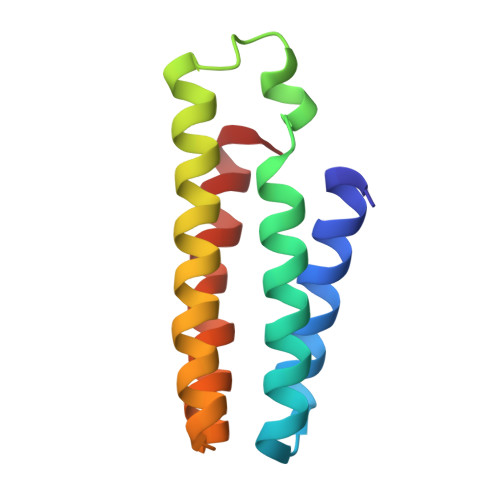Metal-mediated self-assembly of protein superstructures: influence of secondary interactions on protein oligomerization and aggregation.
Salgado, E.N., Lewis, R.A., Faraone-Mennella, J., Tezcan, F.A.(2008) J Am Chem Soc 130: 6082-6084
- PubMed: 18422313
- DOI: https://doi.org/10.1021/ja8012177
- Primary Citation of Related Structures:
3C62, 3C63 - PubMed Abstract:
We have previously demonstrated that non-self-associating protein building blocks can oligomerize to form discrete supramolecular assemblies under the control of metal coordination. We show here that secondary interactions (salt bridges and hydrogen bonds) can be critical in guiding the metal-induced self-assembly of proteins. Crystallographic and hydrodynamic measurements on appropriately engineered cytochrome cb562 variants pinpoint the importance of a single salt-bridging arginine side chain in determining whether the protein monomers form a discrete Zn-induced tetrameric complex or heterogeneous aggregates. The combined ability to direct PPIs through metal coordination and secondary interactions should provide the specificity required for the construction of complex protein superstructures and the selective control of cellular processes that involve protein-protein association reactions.
Organizational Affiliation:
Department of Chemistry and Biochemistry, University of California, San Diego, 9500 Gilman Drive, La Jolla, California 92093, USA.

















